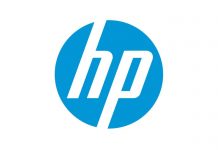Hewlett Packard outlines how the installation of the fifth HP PageWide XL 8000 large format printer completes the UK Hydrographic Office’s transformation to digital
Ten years after the UK Hydrographic Office set out to transition from analogue to digital print production, the journey has been completed with the installation of the fifth HP PageWide XL 8000 large format printer – making it the largest PageWide XL site in Europe.
The UK Hydrographic Office produces and globally sells a series of some 3500 paper nautical charts with the primary aim of protecting lives at sea.
“We never sell charts out of date,” says Paul Kelly, Production Manager at UKHO. Any chart can be hit with updates any time which results in the fact that we have to scrap our stock. Obviously one of the benefits of going to digital printing and going “Print-to-Order” is to get rid of that scrap.”
Benefits noticeable right away
Another positive side-effect of going digital is the reduction of floor space. The printing equipment which previously filled the equivalent of three soccer fields (CTP machines, litho machines, guillotines and all other finishing products) is reduced to merely eleven m² per PageWide XL printer. Additionally, the UKHO could dispose of most of the “nasties” – hazardous chemical substances applied in the lithographic printing process which may cause ill health and which require special prerequisites. “None of it is dangerous anymore and it all condensed down to fewer consumables across the board” states Kelly.
More jobs more frequently
The UKHO has always been monitoring and testing new printing technology. The shift to digital printing started about ten years ago with the installation of their first battery of inkjet-based wide format printers. Over time these printers have been replaced with various other technologies, but costs were still six times higher than a print produced on a lithographic press. Hence the necessity to maintain two different workflows including the lithographic presses.
The introduction of HP PageWide technology in 2015 marked the beginning of a new era. “Although the printing volume stays the same – a three-day process is now done in one single day,” said Kelly. HP PageWide technology consists of more than 200,000 nozzles on a stationary print bar and spans the entire width of the page, enabling breakthrough printing speeds. The extended time between service station cycles also enables sustained productivity.
After a rigorous testing procedure, the first unit was installed in August 2015.
Consistent print quality
Besides the consistent print quality and the advantages inherent to the pigmented inks (water, light and rub resistance) another key criterion for choosing HP PageWide XL was the media handling. The ability to load up to six paper rolls of different sizes and the automatic roll switching when a roll is depleted or a different paper width is selected added to a massive increase in productivity. “We have different widths of packed products. The printer selects the right paper drawer with no detrimental effect to the output speed, and that was a key feature for productivity going forward” summarises Kelly.
More information can be found at www.ukho.gov.uk and www.hp.com/go/LargeFormatPageWide
Hewlett Packard
www.hp.com/go/LargeFormatPageWide
Please note: this is a commercial profile


